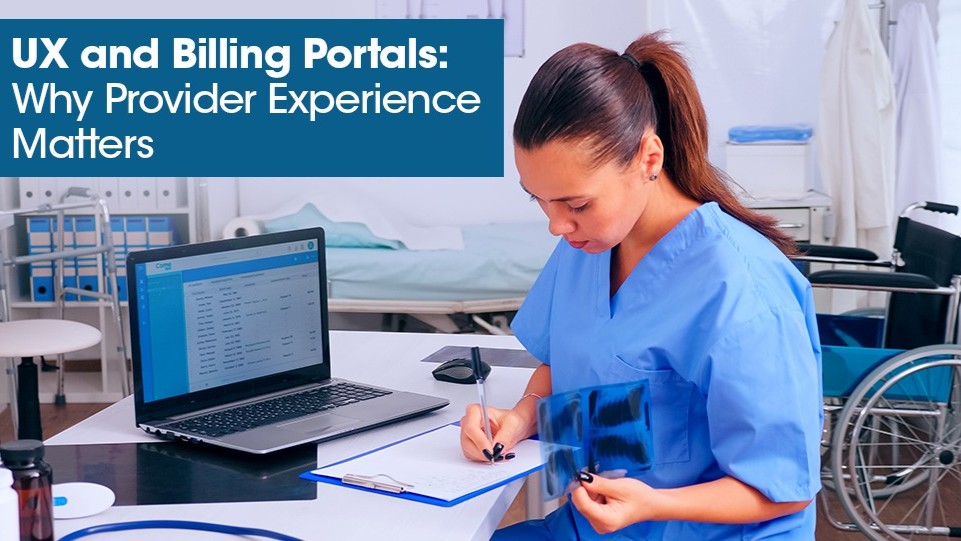In today’s healthcare landscape, conversations about patient experience dominate the spotlight. But there’s another side of the story we often miss: the provider’s experience. For physicians, practice owners, and billing staff, the tools they use every day—especially billing portals—can make or break efficiency, compliance, and even revenue outcomes.
A well-designed billing portal isn’t just about navigation or colors. It is about reducing friction, building trust, and enabling better decisions. When UX (User Experience) meets medical billing, providers gain more than a tool—they gain confidence.
Why UX in Billing Portals Is More Than “Nice to Have”
Healthcare providers handle hundreds of claims, denials, and payer follow-ups every week. A confusing or clunky portal slows them down, frustrates staff, and increases the chance of costly errors.
Clarity: Interfaces that show claims status, denial reasons, and outstanding balances in a clean format save hours of back-and-forth.
Transparency: A portal that makes compliance checkpoints visible ensures providers meet payer and regulatory expectations.
Speed: Automated workflows, intuitive search, and minimal clicks directly translate into faster reimbursements.
Simply put, when UX is ignored, billing portals become barriers instead of enablers.
The Ripple Effect on Provider Experience
Billing is not just a back-office function; it’s tied to every aspect of practice health. Poor UX means:
Longer training times for staff
Higher reliance on IT support
Delayed revenue cycles
Rising frustration that impacts patient-facing time
On the other hand, when the provider experience is prioritized:
Claims move faster
Staff stay motivated and confident
Practices spend more time on patient care rather than troubleshooting systems
Best Practices for UX-Driven Billing Portals
Role-Based Dashboards – Front desk, billing team, and providers should each see only what matters most to them.
Smart Alerts – Automated prompts for eligibility errors, missing documentation, or compliance deadlines prevent denials before they happen.
Mobile Accessibility – Providers today expect to review reports and claim statuses o the go.
Seamless Integration – Billing portals should “talk” to EHRs, practice management systems, and clearinghouses without friction.
These design principles reduce stress, enhance adoption, and strengthen the overall billing ecosystem.
Why This Matters for the Future of Medical Billing
As regulations evolve and payment models shift, provider experience will shape adoption of new billing technologies. Billing portals that combine strong UX with compliance-first features will become the competitive edge for practices and billing companies alike.
When providers feel supported by their systems, they deliver better care and sustain healthier practices. That’s why UX in billing portals is not just about design—it’s about empowering providers at every step of the revenue cycle.
Summary:In medical billing, UX is not an afterthought. Billing portals that simplify workflows, reduce errors, and support compliance directly impact provider satisfaction and financial outcomes. A strong provider experience ensures practices spend less time fighting technology and more time focusing on patient care.
#MedicalBilling #HealthcareUX #ProviderExperience #BillingPortals


